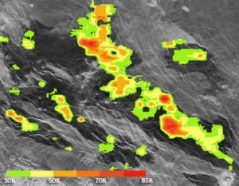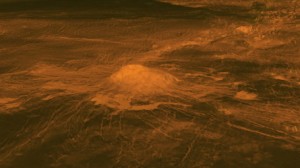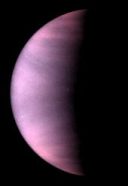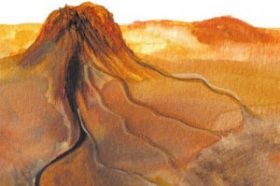Warm lava on a hot planet
Volcanoes on Venus might be active

The scientists behind a new study say yes.
Their evidence for recent volcanic activity on Venus comes from a lava flow in the planet’s northern hemisphere. The flow is hotter than the rocks around it, which means the lava might still be cooling off.
“The flow we studied seems to be very young — it is still warm inside,” Nataliya Bondarenko told Science News. Bondarenko, who is at the University of California, Santa Cruz, worked on the new study. She is a planetary scientist, which means she studies planets and planetary systems, such as the solar system.

Bondarenko and her colleagues studied the lava flow using data from NASA’s Magellan mission. That spacecraft spent four years in orbit around Venus and used radar to make a map of 98 percent of the planet’s surface. On October 11, 1994, the mission ended, and the spacecraft plunged through Venus’ heavy cloud cover and crashed onto the planet below.

The scientists say the lava flow can’t be very old because if it were, it would have cooled off enough that Magellan wouldn’t have noticed the difference in microwaves. Bondarenko told Science News the flow can’t be more than 100 years old. For a volcano, that’s still active. She adds that the flow appears in a 1978 view of the surface that a craft called the Pioneer Venus Orbiter captured.
Bondarenko and her team are not the first scientists to claim evidence of activity on Venus. In April, a different team of scientists described several lava flows in Venus’ southern hemisphere. According to the scientists, those flows probably formed in the last 250,000 years ― which is recent for geology.
Suzanne Smrekar, a planetary geologist, studied the lava flows in southern Venus. She works at the Jet Propulsion Laboratory in Pasadena, Calif. She and her team used data from the Venus Express, a European Space Agency spacecraft currently observing Venus.

This means that in her mind, the question of whether or not Venus is still active is not yet settled. Stay tuned — Bondarenko and her fellow researchers are looking for new data on potentially even more new flows.







